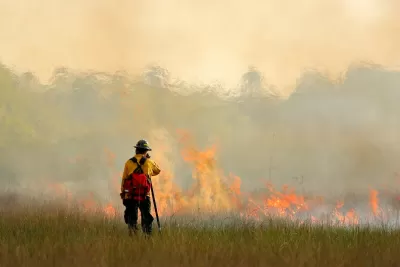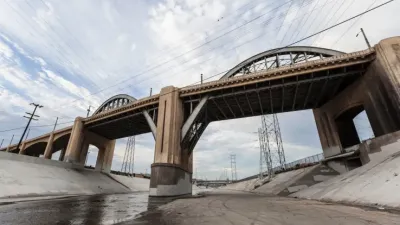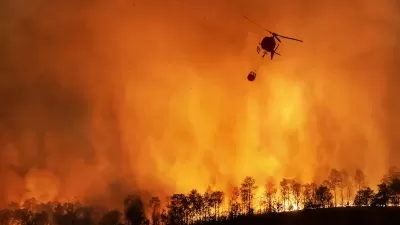Federal firefighting forces, already underresourced, are being slashed even as wildfires become a year-round problem.

Federal funding and staff cuts are undermining state and federal agencies’ ability to prevent and fight wildfires, according to reporting by Mark Olalde for Pro Publica.
In the wake of devastating fires in the Los Angeles region, state and local agencies in California and across the country need support more than ever. Yet “The uncertainty has limited training and postponed work to reduce flammable vegetation in areas vulnerable to wildfire. It has also left some firefighters with little choice but to leave the force, their colleagues said.”
After recent cuts, some seasonal workers’ contracts were suspended, while firefighters headed to support a major prescribed burn in Florida were turned back. “Prescribed burns help prevent catastrophic wildfires by clearing vegetation that serves as fuel, and the meticulously planned 151,434-acre Florida fire — to cover more than six times the land area of nearby Miami — was also meant to protect a Native American reservation and improve ecological biodiversity.” Roughly two-thirds of prescribed burns in the nation are in the Southeast, where they help minimize fuel for naturally occurring fires and promote biodiversity.
Federal firefighter forces already faced challenges in hiring and retaining workers due to low pay and high-risk work. Now, agencies are unsure how to proceed, or when — and if — they will have access to resources again.
“All this comes as wildfires are growing larger and more catastrophic,” Olalde points out. “The area of land burned annually over the past decade was 43% larger than the average since the federal government began tracking it in 1983, according to data from the National Interagency Coordination Center.”
FULL STORY: Trump’s funding cuts leave the nation vulnerable to catastrophic wildfire

Planetizen Federal Action Tracker
A weekly monitor of how Trump’s orders and actions are impacting planners and planning in America.

Congressman Proposes Bill to Rename DC Metro “Trump Train”
The Make Autorail Great Again Act would withhold federal funding to the system until the Washington Metropolitan Area Transit Authority (WMATA), rebrands as the Washington Metropolitan Authority for Greater Access (WMAGA).

DARTSpace Platform Streamlines Dallas TOD Application Process
The Dallas transit agency hopes a shorter permitting timeline will boost transit-oriented development around rail stations.

Renters Now Outnumber Homeowners in Over 200 US Suburbs
High housing costs in city centers and the new-found flexibility offered by remote work are pushing more renters to suburban areas.

The Tiny, Adorable $7,000 Car Turning Japan Onto EVs
The single seat Mibot charges from a regular plug as quickly as an iPad, and is about half the price of an average EV.

Supreme Court Ruling in Pipeline Case Guts Federal Environmental Law
The decision limits the scope of a federal law that mandates extensive environmental impact reviews of energy, infrastructure, and transportation projects.
Urban Design for Planners 1: Software Tools
This six-course series explores essential urban design concepts using open source software and equips planners with the tools they need to participate fully in the urban design process.
Planning for Universal Design
Learn the tools for implementing Universal Design in planning regulations.
Roanoke Valley-Alleghany Regional Commission
City of Mt Shasta
City of Camden Redevelopment Agency
City of Astoria
Transportation Research & Education Center (TREC) at Portland State University
US High Speed Rail Association
City of Camden Redevelopment Agency
Municipality of Princeton (NJ)





























